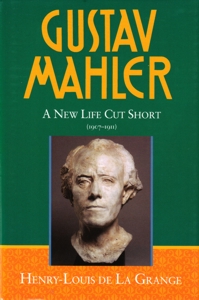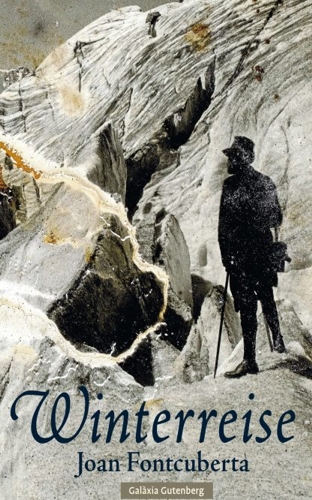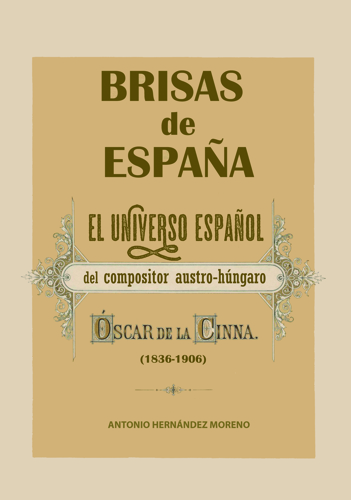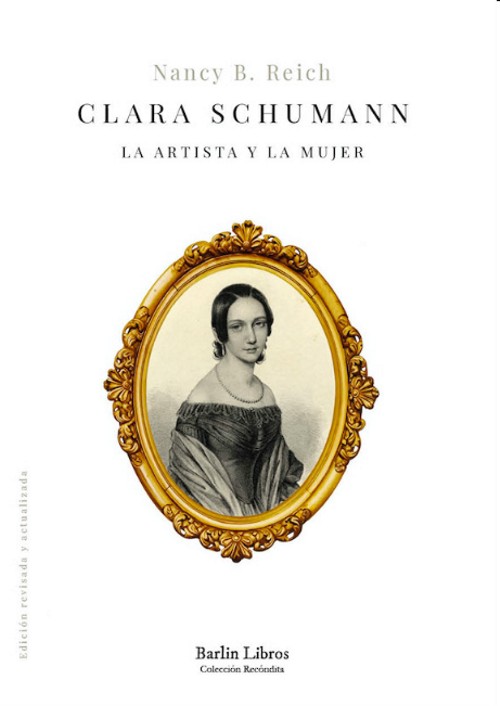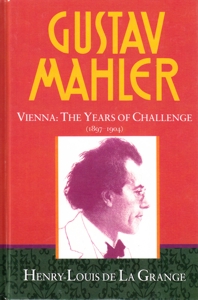
Gustav Mahler, vol. 2. Vienna: The Years of Challenge (1897-1904)
La Grange, Henry-Louis de
Oxford University Press. 1995Ficha técnica
- EAN: 9780193151598
- ISBN: 978-0-19-315159-8
- Editorial: Oxford University Press
- Fecha de edición: 1995
- Encuadernación: Cartoné
- Dimensiones: 23,5x15,5
- Idioma: Inglés
- Nº páginas: XX+892
No disponible temporalmente
Disponibilidad sujeta a la información del editorPVP. 148,50€
Añadir a la Lista de deseos
The second volume of de La Grange's monumental study of Mahler's life and work.
Gustav Mahler was one of the supremely gifted musicians of his generation. His contemporaries came to know him as a composer of startling originality whose greatest successes with the public never failed to provoke controversy among the critics. As a conductor, his relentless pursuit of perfection was sometimes viewed as tyrannical by the singers and musicians who came under his baton. Professor Henry-Louis de La Grange has devoted over thirty years of painstaking resarch to this study of Mahler's life and works. His biography, ultimately to be completed in four volumes, is drawn from a vast archive of documents, autographs, and pictures, assembled by La Grange at the Bibliotheque Musicale Gustav Mahler, Paris.
This second volume covers the years 1897-1904, when the focus shifts to Vienna. It opens with Mahler's triumphant debut as director of the Vienna Court Opera, and follows with the revolution he wrought there in standards of performance and, with the Secession painter Alfred Roller, in scenic representation. An account is also given of Mahler's story and brief engagement as conductor of the Vienna Philharmonic Concerts, following Richter's resignation in 1989. La Grange depicts the brilliant society of pre-war Vienna, then the centre of the intellectual and artistic world; the extraordinary range of artists among whom Mahler lived and worked included the composers Dvorak, Gustave Charpentier, Richard Strauss, Zemlinsky, and Schoenberg and his two disciples, Berg and Webern; the painters architects and decorators of the Secession with Klmit at their head; the writers Hauptmann, Dehmel, Hofmannsthal, and Schnitzler. There he also met Alma Schindler, 'the most beautiful woman in Vienna', and La Grange tells the story of their engagement and marriage in 1902 and the early years of their tempestuous relationship. As his fame spread throughout Europe, Mahler travelled with his music to Germany, Russia, Holland, Poland, and Belguim, meeting many other leading musicians of his day, including Pfitzner, Mengelberg, Diepenbrock, Oskar Fried, and many others.
During this period Mahler wrote some of his best-loved works, including the fourth and Fifth Symphonies, and the three orchestral song-cyles and collections - the Wunderhorn -, Ruckert-, and Kindertotenlieder. For each of these works La Grange provides full notes and analytical descriptions. Scrupulously researched, richly documented, this is a study worthy of the extraordinary artistic achievement of Gustav Mahler's Vienna years.
CONTENIDO:
List of illustrations
Inaccessible sources
Abbreviations
1. Vienna and Viennese music; conditions at the Opera (may-july 1897)
2. Substitute director; opening the new season; the Opera under Jahn; first reforms (july-september 1897)
3. Official appointment; first productions; conflicts with Leoncavallo (september 1897-february 1898)
4. First Philarmonic concerts; first battles at the Opera; the "Ring" and "Der Freischütz" (march-december 1898)
5. New anti-Semitic campaign; second Philarmonic season; the Second Symphony in Liège and Vienna (january-may 1899)
6. War with the administration; difficulties with the singers; Alt-Aussee, the Fourth Symphony (may-december 1899)
7. Fresh anti-Semitic attacks; Ritcher's departure; Beethoven's Ninth Symphony; Hirschfeld's declaration of war (december 1899-april 1900)
8. Venice; Paris; Maiernigg; completion of the Fourth Symphony; Gutheil-Schoder joins the Hofoper (april-august 1900)
9. Quarrel with the Bühnenverein; triumph of the Second Symphony in Munich; failure of the First in Vienna; beginning of the third season of the Philarmonic (august-december 1900)
10. Première of "Das klagende Lied"; illness and operation; resignation from the Philarmonic; the Fifth Symphony and the "Rückert-Lieder" (january-august 1901)
11. Correspondence with Strauss; arrival of Bruno Walter; "Die lustigen Weiber von Windsor" and "Les contes d'Hoffmann"; première of the Fourth Symphony (september-december 1901)
12. Alma Schindler; Mahler in love; engagement (december 1901-january 1902)
13. Strauss and "Feuersnot"; the Fourth Symphony in Vienna; marriage and journey to Russia; Beethoven Exhibition at the Secession; première of the Third Symphony: the Krefeld triumph (january-june 1902)
14. Concerts in the Rhineland; first marital storms; the first Roller collaboration: Roller's "Tristan"; première of "Louise" (june 1902-april 1903)
15. Triumph in Basel; contract with Peters; the Sixth Symphony completed; first trip to Holland (april-december 1903)
16. "Der Waffenschmied", "Euryanthe", "Der Corregidor", "Falstaff"; Mannheim, Heidelberg, Prague, Mainz, Cologne; encounters with Hauptmann, Bahr, Hofmannsthal; Schoenberg, Zemlinsky and the Vereinigung; birth of Anna; completion of the Sixth Symphony and the "Kindertotenlieder" (january-september 1904)
Appendix 1. Catalogue of Mahler's works
Appendix 2. Detailed history and analysis of works composed between 1898 and 1904
Bibliography
Index




